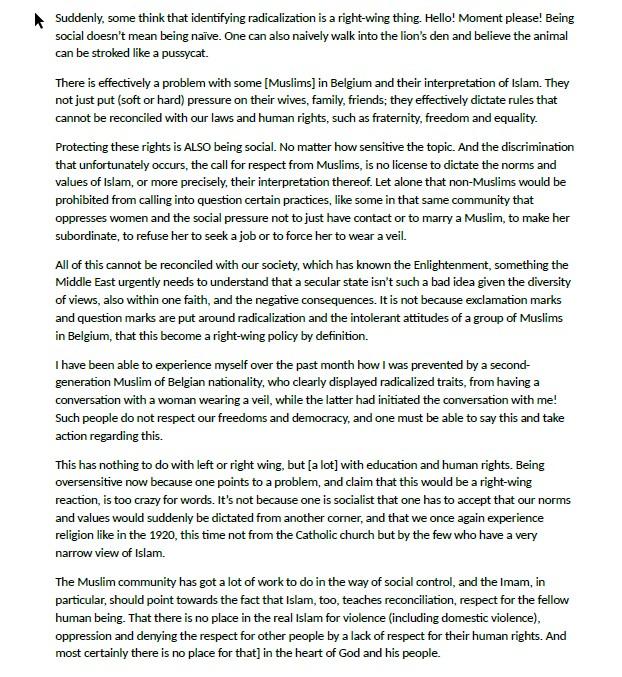
Explaining the Burkini debates
The TINA-frame part 1
On a hot day in July 2016, four policemen walked onto a beach in Nice, France, ordered a Muslim woman to take off part of her hijab dress, in full view of dozens of other tourists, and fined her for violations of the local decency regulations. The incident was captured by a photographer (which makes the public undressing even more disconcerting) and the images went viral. They triggered a fierce international debate on the why and how of such interventions, in which Muslim female dress is seen as a direct index of a deeper threat – that of jihadism.
How could these four policemen see their intervention as “normal”? After all, one can question, on grounds of common sense, quite a few aspects of a situation in which four armed men order a woman to publicly undress, and sanction her “over-dressedness” on a beach as an act of indecency. The answer can be found elsewhere, in a feature of public debate which has become pervasive whenever Islam and its (real or imagined) characteristics are the theme. There is a highly peculiar use of identity in such arguments, and I shall attempt to sketch it in what follows.
Islam is captured in the TINA frame – there is only one way to respond to it, and that is to defend the absolute status of “our way” and accept no compromise, let alone an alternative strategy, in that battle.
As I said, the incident triggered a massive debate in mass and social media, in which broadly two camps could be discerned. One camp saw the police action as normal and argued that hijab does not belong in our society, since it is an emblem of Islamic backwardness regarding male-female equality. The other camp saw it as a transgression of civil liberties – the freedom of religion – and as an illustration of the absurdities to which the War on Terror (read: the West versus Islam) had led. Both camps overlap to some extent (but certainly not in absolute terms, as we shall see) with the traditional Right-Left distinctions in the political field.
In Belgium, too, this debate raged, and the Belgian-Flemish Social-democrats took a position which largely sided with the first camp. For this, evidently, they were attacked by fractions of the Left. And on 15 August, a member of the Social Democratic party posted the following update on Facebook.

Facebook update (Dutch original, my translation)
There is, in se, nothing remarkable about the text, other than that it combines several arguments found in hundreds of other interventions in these discussion. I summarize them as follows:
- The text makes a neat distinction between “us and them”, and both parties are treated in a fundamentally different way.
- The “us” party is characterized by epistemic superiority: we know how wrong “they” are, and we know what “they” should do in response to that.
- The “they” party is described as a situated entity in the “here-and-now” chronotope. Their actual and concrete behavior is the focus of discussion.
- The “we” party, in contrast, is described as absolute and timeless, in a “here-always” chronotope, by invoking “our” history (Enlightenment) and “our” values.
- “Their” behavior is political: concrete forms of behavior are seen as an immediate and distinct threat to “democracy”. Our reaction to this, in contrast, is explicitly depoliticized and presented as a simple factual, rational observation.
This neat (and recurrent) separation of different universes for “us” and “them” enables the author to conclude that the Social-Democratic emphasis on law and order has nothing to do with traditional political Left-Right distinctions. It is a matter of rational reasoning – a simple statement of “problems” – which refers not to specific really-existing political directions, but to our fundamental identity. Thus, it wasn’t President Hollande’s socialism that motivated the four policemen’s action, it was the values of Enlightenment.
We see here how identity is used as a very powerful argument, suggested to transcend everyday politics and to be played out at an existential and timeless level of essential identity. Small features of “their” behavior can now be seen as absolute challenges to who we are, and as in need of responses that protect that fundamental identity. Such responses can – or must – be given by political actors of all shades and colors: actual political positions (and traditions) do not matter here, for our very essence is at stake. And just like in economic matters, addressing the threat of Islam is captured in the TINA frame – there is only one way to respond to it, and that is to defend the absolute status of “our way” and accept no compromise, let alone an alternative strategy, in that battle.
Decades ago, scholars such as Manuel Castells, Immanuel Wallerstein and Eric Hobsbawm warned us that identity would become the battlefield of the globalized political world. They were right, and we begin to see how this battlefield is organized: by a politics of identity which denies its political – contestable and debatable – nature, and instead offers itself as an absolute feature.